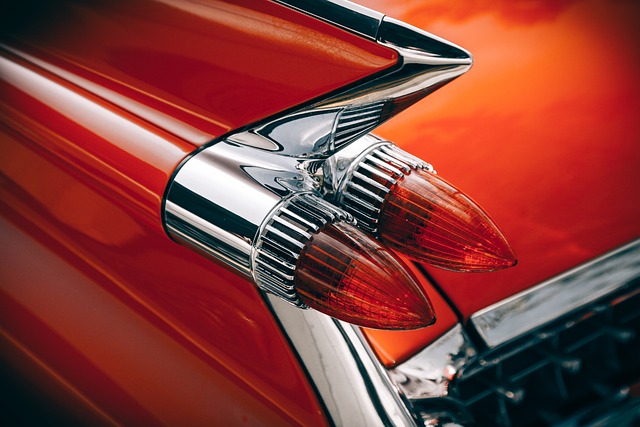VIN verification (check) authenticates a vehicle's history and specifications by cross-referencing its unique VIN with databases including manufacturing details, ownership records, accident reports, and recall info. It's crucial for car buyers to ensure a clean title, aiding in informed decisions, and is also essential for registration, title transfers, insurance, lenders, and law enforcement to prevent fraud. Before visiting the Los Angeles DMV, gather required documents like vehicle title/registration, repair records, insurance claims, driver's license, and car insurance card. Ensure your vehicle isn't on blocked or stolen lists online. At the DMV, visit the "Vehicle Records" or "VIN Verification" window with all necessary info; a representative uses a vin verifier tool to confirm details and provide a history report. Proper preparation and using a reliable vin verifier can streamline the process.
Navigating Los Angeles’ Department of Motor Vehicles (DMV) Vehicle Identification Number (VIN) check process can seem daunting, but understanding the steps involved makes it manageable. This guide breaks down the entire procedure, from preparing essential documents to passing a successful VIN verification. We’ll walk you through each step inside the DMV, highlighting common issues and their resolutions. By the end, you’ll be equipped with the knowledge to confidently tackle your next VIN check using reliable vin verifier tools.
- Understanding VIN Verification: What It Entails and Why It's Necessary
- Preparing for Your DMV Visit: Essential Documents and Steps to Take
- The VIN Check Process: A Step-by-Step Guide Inside the DMV
- Common Issues and How to Resolve Them During a VIN Verification
Understanding VIN Verification: What It Entails and Why It's Necessary

VIN verification, often referred to as a VIN check, is a crucial process that involves validating the authenticity and history of a vehicle’s Vehicle Identification Number (VIN). It entails cross-referencing the VIN with various databases to retrieve detailed information about the car, including its manufacturing data, specifications, previous ownership records, accident history, and potential recalls. This procedure plays a vital role in several aspects of vehicle management and transactions.
For car buyers, a vin verifier is essential for ensuring they are purchasing a vehicle with a clean title and no hidden issues. It helps them make informed decisions, avoiding potentially costly surprises. Similarly, for vehicles undergoing registration or title transfer, a successful VIN check guarantees accuracy in documentation, preventing fraud and ensuring compliance with legal requirements. This process is also critical for auto insurance companies, lenders, and law enforcement agencies to maintain comprehensive vehicle records.
Preparing for Your DMV Visit: Essential Documents and Steps to Take

Before heading to the Los Angeles DMV for a VIN (Vehicle Identification Number) check, prepare by gathering essential documents and ensuring your vehicle meets the required standards. It’s crucial to bring along the title or registration papers of your vehicle as proof of ownership. Additionally, have any necessary paperwork from previous transactions or modifications, like repair records or insurance claims, as these could impact the outcome of the inspection.
A well-prepared driver’s license and a valid car insurance card are also mandatory. Verify that your vehicle isn’t on the DMV’s blocked or stolen list by checking their online resources in advance. This simple step can save you time at the counter and ensure a smoother process during your visit.
The VIN Check Process: A Step-by-Step Guide Inside the DMV

Navigating the Los Angeles Department of Motor Vehicles (DMV) for a Vehicle Identification Number (VIN) check can seem daunting, but with a clear step-by-step guide, it becomes a straightforward process. First, gather all necessary documents and your vehicle’s registration. Then, visit one of the LA DMV offices during their operational hours. Upon arrival, head to the window marked “Vehicle Records” or “VIN Verification.” A DMV representative will assist you in accessing the state’s database to validate your vehicle’s information.
They’ll request your driver’s license and vehicle documents, and you may be asked to provide additional details about the car’s make, model, and year. After verifying these specifics, the DMV official will use a vin verifier tool to retrieve the VIN from their system. Once confirmed, they’ll issue you a report detailing the vehicle’s history, ensuring it’s been reported as stolen or has any other relevant notations.
Common Issues and How to Resolve Them During a VIN Verification

Many issues can arise during a Vehicle Identification Number (VIN) verification process at the Los Angeles Department of Motor Vehicles (DMV). One common problem is inaccurate or incomplete vehicle information provided by the owner, leading to delays. To resolve this, ensure all details—including the VIN, make, model, year, and any modifications—are accurate and readily available before visiting the DMV. A thorough preparation helps streamline the process.
Another issue could be documentation errors or missing paperwork. All required documents, such as the vehicle’s title, registration, and insurance proof, should be organized and presented clearly. If you encounter any problems with documents, give the DMV a call in advance to understand what is needed. Using a reliable vin verifier can also help prevent issues by providing accurate data, saving time and effort during the verification process.
Navigating Los Angeles’ DMV VIN check process can seem daunting, but with the right preparation and understanding, it can be a smooth experience. By familiarizing yourself with the VIN verification process, ensuring you have all necessary documents, and following our step-by-step guide, you’re well on your way to successfully completing your vehicle’s inspection. Remember, a proper VIN verifier is crucial for both ensuring vehicle authenticity and compliance with legal requirements. With this knowledge in hand, you’ll be equipped to tackle any common issues that may arise and emerge from the DMV with a sense of confidence and accomplishment.
